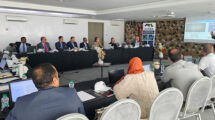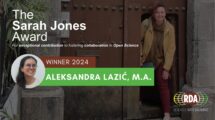by: Katharina Flicker, TU Wien
Originally published at https://www.eoscsecretariat.eu/news-opinion/interview-nobel-laureate-joachim-frank-science
Science is a global endeavor: regional initiatives such as the EOSC are coordinating with similar initiatives on a global scale to ensure that scientists can cooperate globally, within academia as well as with industry. Thus, the perspective of researchers outside Europe is particularly relevant, to learn about expectations, needs and visions on the future of research and international research collaboration. Let’s see what Nobel Laureate Joachim Frank has to say.
Interview with: Joachim Frank, Professor, Dept. of Biochemistry and Molecular Biophysics & Dept. of Biological Sciences, Columbia University
For more information on Joachim Frank, please visit this link.
“Us against them” mentality might defeat existing international cooperation
KF: What does your work currently focus on?
JF: I focus on taking advantage of single-particle cryo-EM technology (for which I was awarded a Nobel Prize in Chemistry) as applied in structure biology research. Several collaborations focusing on diverse molecules (receptors, ion channels, ribosome) implicated in disease processes.
KF: What routines do you repeatedly do that could be automated?
JF: I spend a lot of time on unreasonable, absolutely trivial tasks like setting up or updating profiles, linking credentials of journals to other credentials, chasing lost passwords, uploading manuscripts, dealing with 1-800 phone lines with automated voices in numerous service contexts. These are results of completely misguided attempts at automation. The extent of these pervasive changes in infrastructure, compared with the settings I was used to, is such that I frequently fly in a rage.
KF: Where are the challenges in the current digital services you use? What kind of support is needed to face those challenges?
JF: For the subset of digital services I singled out above, less automation would be much preferable. For digital services related to public archiving, knowledge base networks, bioinformatics, standardized lab record keeping, domain-specific search engines, the integration of multiple existing platforms would be very desirable.
KF: What will research look like in 5-25 years? What will be the effect and impact on research environments like infrastructures, services and policies?
JF: The state of the world in all aspects after the current pandemic is unpredictable. I don’t think it is worthwhile thinking of a status quo ante and strategizing for it. “Us against them” mentality might defeat existing international cooperation. Also, depending on the politics of individual countries or alliances, a good deal of science funding might go into the study of pandemic-prone pathogens and how to combat them. The USA has proven extremely vulnerable to economic disruption, and if the waves of the pandemic continue under the current models, science funding and the pursuit of science as we know it might be in jeopardy.
KF: What are the biggest barriers to opening up code, data…?
JF: In my area there is a controversy about a patent claim relating to data processing methodology that demonstrably slows down progress in the field.
KF: What does it take to encourage you and researchers coming from your field to open your science?
JF: The general trend in recent years to deposit preprints in the life sciences is a good sign and my prediction is that it will become an accepted mode of fast communication, pending the blessing of authoritative review. In the USA NIH has been very effective encouraging or enforcing open science including free dissemination of software, deposition of data, and dissemination of publications. Still I favor immediate unrestricted access to publications worldwide.
KF: How could the EOSC help to drive open science and facilitate open access?
JF: Lobby for legislation that curtails publishers of scientific journals in their profiteering, one of the main reasons for the current barriers.
KF: Please describe in one short sentence what is the main added value that you see in the EOSC.
JF: It’s a good model for fostering open science.
KF: Thank you.
Interact with the growing EOSC community, join the EOSC Liaison Platform!
Photo credit to Michael DiVito







